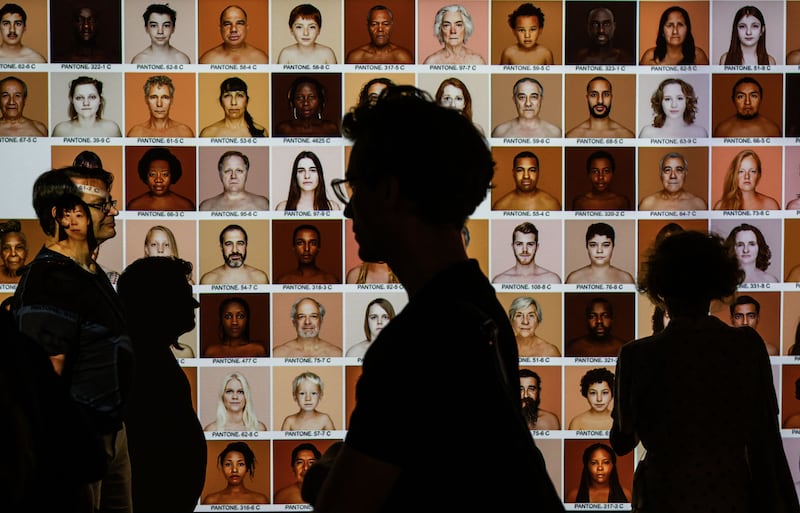Revisiting Berlin’s Tacheles on Saturday was like bumping into an old friend who has had so much work done on their face that you cannot look away.
The familiar graffitied stairwell is still there, including “Ireland” in red letters, but something key is missing: the bite of urine in the air.
Back in my student days, a decade after the Berlin Wall fell, this five-story squat sat like a hulking spaceship on the landscape of a rapidly gentrifying city.
Like magic, the urine stench meant few tourists made it all the way to the fifth-floor bar.
Russia regains influence in its ‘near abroad’ as West wraps itself in red lines
‘They just want us to work and have babies.’ Exasperation in China as Halloween falls foul of authorities
Tories shout ‘we told you so’ after Rachel Reeves’ tax-and-spend Labour budget
How Trump allies could challenge US presidential election result
Regulars learned to take the steps two at a time while suppressing their gag reflex. Tucked in under the attic roof, Ragna doled out the cheap drinks and punters sat on sofas so rancid that people might have been tempted to throw the offending furniture off the fifth-floor balcony if that had been possible.
Even then, though, Tacheles was sliding from cultural collective to tourist trap amid bitter rows between the occupying artists.
In 2012 – after much legal wrangling, hand-wringing and false-memory nostalgia – Tacheles closed its doors and disappeared into a chrysalis. Not its first.

Built in 1907 as a shopping arcade with Milanese notions, the complex housed variously a department store and a showroom for innovative AEG home appliances.
The SS moved in during the 1930s and, despite some war damage, the complex remained largely intact as a mixed-use building until East Berlin authorities demolished half in 1980.
A decade later, plans to demolish the rest were halted by artistic squatters who renamed it Tacheles, beginning its fourth existence as an anarchic collective. Now it has emerged from its chrysalis, in a fifth iteration, as a textbook example of where Berlin seems to be going: trading up in a big way while trading on its past.
The original building is part of a new-build arcade by Swiss architects Herzog & de Meuron that tries to recreate some of the original flair, disguising standard office and apartment blocks with bolted-on brick elements.
Anchor tenants so far include a supermarket, a drugstore and a Porsche showroom; a new public space appears to offer no seating unless you buy something.
Most intriguing, though, is the original building. After a thorough make-over, it now houses two restaurant-cafes, a bakery, a ballroom and a high-end cocktail bar in the former attic bar.
On two sprawling floors with 5,000sq m exhibition space, the main tenant is the contemporary photography and visual art gallery Fotografiska.
It opened with a show by artist Candice Breitz, apparently not quite cancelled in Germany for her Israel-Gaza views, and continues now with works exploring issues of race, gender identity and a show reclaiming the female nude.
With an air of breathless promise the curators – two men and one woman – promise visitors a “transformative journey, reimagining the nude body as a vibrant canvas for an array of diverse artistic expressions and interpretations”.
Some of the artists have clever and original ideas, flipping visual conventions of European art to show dressed women luxuriating in the company of naked men. Others plod through well-ploughed gender furrows and insist in lengthy explanatory texts – bulls**t bingo cards at the ready – that their work is “provocative, dangerous and break[s] new ground”.
With remarkable chutzpah, Fotografiska ignores generations of women photographers who explored these issues and more decades ago – often at a social and professional cost rather than crowd-pleasing applause.

On the whole Fotografiska is a welcome new space for contemporary artists in Berlin, even if its curators occasionally sound like Absolutely Fabulous PR guru Edina Monsoon planning a fashion show: “I want pictures of sad but beautiful children, happy gay couples, slogans like World Health, No Pollution, Fashion Cares.”
Open since late last year, the new Tacheles has been given an ambivalent welcome, with some bemoaning what they see as the latest capitulation of alternative Berlin to big capital.
But in a city where change is the only constant, the new Tacheles is very much of the moment. Happily monetising its anarchist past, this supremely capitalist new venue has – perhaps unwittingly – embraced the false memory syndrome that filled obituaries for the vanished art collective.
Heading off, I notice a Swedish woman posing for a photographer in the arcade, braving a Siberian breeze in a white fur hat and an oversized Kansas City Chiefs jersey.
As that nameless Irish philosopher once said: it is what it is and we are where we are.





